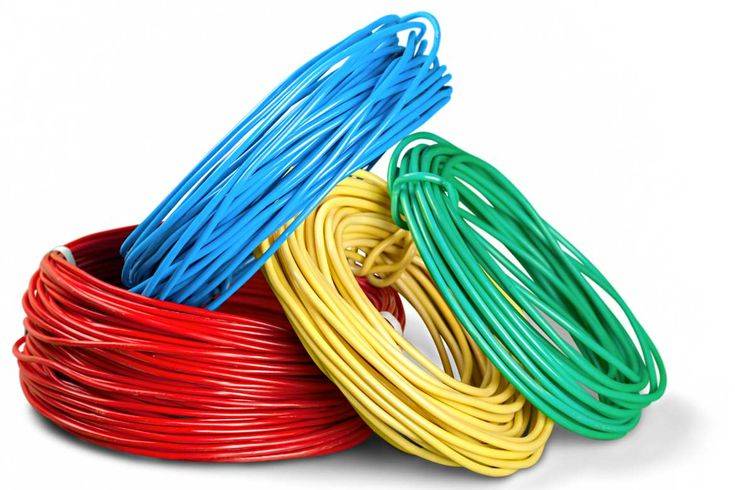Cables make up the unseen infrastructure that runs everything from our houses to enormous industrial sites in our wired world. However, the various kinds of cables that operate inside machines, beneath streets, and behind buildings are rarely considered by the general public. Knowing these many electrical cables is not only technical; it is also useful information that can affect any electrical project's performance, safety, and cost-effectiveness.
To make informed decisions, it's also essential to understand where these cables come from. Leading electrical wire and cable manufacturers in India play a crucial role in supplying high-quality, durable cables that meet the needs of both residential and industrial applications. Their innovations and standards significantly impact the reliability of modern electrical systems.
Understanding Basic Electrical Cable Structure
The majority of electrical cables are made up of one or more conductors, usually made of copper or aluminum, that are encased in insulation. But that's usually where the similarities stop. The gauge (thickness), number of conductors, insulation type, external jacketing, and conductor material vary among cables. Each of these variations has been thoughtfully created for particular purposes, electrical loads, and situations; they are not random.
In addition to preventing electrical contact between conductors, the insulation that surrounds them protects against environmental damage and allows wires to be identified by color. Thermoplastic, cross-linked polyethylene, and diverse rubber compounds are examples of modern insulating materials. Each of these materials has a unique temperature rating, degree of flexibility, and ability to withstand environmental factors including moisture, sunshine, and chemicals.
Residential Building Wiring
NM-B Cable (Romex)
In homes, non-metallic sheathed cable (NM-B) is the most widely used kind of wiring. A heat rating of 194 degrees Fahrenheit is indicated by the "B". NM-B, which usually has a yellow or white outer jacket, has a bare ground wire and individually insulated conductors. It is only intended for usage inside in dry environments.
For general home wiring, such as outlets, switches, and lighting fixtures, NM-B is perfect. It must never be buried in the ground, placed outside, or in a damp area. 10-gauge (30-amp circuits), 12-gauge (20-amp circuits), and 14-gauge (15-amp circuits) are common sizes.
UF Cable (Underground Feeder)
When wiring needs to extend outdoors or underground, UF cable is the solution. Visually similar to NM-B, UF cable's construction is notably different—its conductors are embedded in solid waterproof thermoplastic rather than individually wrapped. This design creates a moisture barrier that permits direct burial and installation in damp locations.
UF cable powers outdoor lighting, garden equipment, detached buildings, and irrigation systems. When buried, local codes typically require placement at specific depths (usually 18-24 inches) with warning tape placed above.
Armored and Metal-Clad Cables
AC Cable (BX)
Armored cable, commonly called BX, features a spiral metal covering that provides physical protection and serves as a grounding conductor. Inside, insulated hot and neutral wires are wrapped in paper. This relatively expensive, rigid cable is more common in older installations and commercial buildings.
MC Cable (Metal-Clad)
MC cable represents the modern evolution of armored cable. Instead of paper wrapping, MC cable's internal conductors have plastic insulation. The flexible metal armor protects against physical damage while providing excellent electromagnetic interference (EMI) shielding.
Both AC and MC cables excel in environments where wiring might face physical damage or where additional fire protection is desired. They're commonly used in commercial buildings, industrial settings, and areas where local code requires enhanced protection.
Power and Service Entrance Cables
SE Cable (Service Entrance)
Service entrance cables connect the utility power supply to a building's electrical system. They come in two styles:
SE-Style R is typically used from the main service panel to secondary distribution panels. It can sometimes be used for circuits to large appliances like ranges and dryers.
SE-Style U runs from the utility service point to the meter or service entrance panel. It's also used for circuits where a grounded conductor isn't required, such as some HVAC installations.
SE cables usually feature aluminum conductors for overhead applications due to their lighter weight and cost-effectiveness, though copper variants exist for specialized applications.
Power Cables
Unlike power cables for residential use, industrial power cables are fitted to manage surges in voltage and current. These cables have thicker insulation, which are typically packed with environmental shields, increasing layers of protection. Industrial grade equipment as well as powerful motors are driven through them.
Data and Communication Cables
Coaxial Cable
High fidelity coaxial cable TV and radio signals uses coaxial cables, internally known as "co-ax", which possesses a center conductor encapsulated in a protective shield and a layer of insulation. Due to the coaxial cable's insulating ability, it is free from external signal interference.
Cat5e and Cat6 Ethernet Cables
Copper wires are twisted into pairs, forming a Category 5e (Cat5e) cable. With ribbed RJ45 connectors integrated, it forms a computer network interface supporting 1 gigabits per second. Later generations of ethernet cables such as Category 6 (Cat6)—with speeds ranging up to 10 gigabits per seconds over shorter lengths—provide greater degrees of adaptability. Both models are the industry standard that encounter amplified distances from interference.
Fiber Optic Cable
Unlike metal conductors that transmit data through electricity, fiber optic cables transmit data through thin glass or plastic fibers using light pulses. They have extremely high bandwidth, are immune to electromagnetic interference, can transmit signals without degradation over long distances, provide more security, and are far superior in performance. Due to these benefits, fiber optic cables have changed telecommunications, the backbone infrastructure of the internet, and high-performance networks.
Specialty Application Cables
Marine Electrical Cable
Marine environments present unique challenges: constant moisture, salt exposure, and often continuous movement. Marine cables feature highly flexible construction with numerous individually tinned copper conductors that resist corrosion. The insulation must withstand UV exposure, temperature extremes, fuel, oil, and water.
Welding Cable
Welding cables are made using specialized stranded copper conductors. Consequently, welding cables must endure high currents while also maintaining extreme flexibility. The conductors are covered with extraordinary insulating materials that resist abrasions, oils, grease, and acids resistant to extremely high temperatures. Welding cables are quite flexible which means that the cables can be easily handled at different angles.
Photovoltaic (PV) Cable
Specialized PV cable is becoming more and more in demand as solar energy gains popularity. These wires link electrical systems and inverters to solar panels. They must have lengthy service lives (20+ years) and be able to tolerate wetness, high temperature swings, and continuous UV exposure. Special cross-linked insulating materials that are resistant to environmental deterioration are commonly used in PV cables.
Low Voltage and Control Cables
Low Voltage Cable
Operating below standard line voltage (typically under 50V), low voltage cables power security systems, doorbells, thermostats, landscape lighting, and various smart home technologies. Their reduced voltage requirements mean they generally need less insulation and can be smaller in diameter than standard power cables.
Control Cables
Specialized multi-conductor cables are used by industrial control systems to transfer signals between sensors, controllers, and machinery. These connections frequently have shielding to keep crucial control signals safe from electromagnetic interference. Control cables are found in building automation systems, manufacturing facilities, and any other location where precise control of equipment is necessary.
Understanding Wire Gauge and Safety Considerations
Wire gauge—a measure of conductor diameter—directly affects how much current a wire can safely carry. In the American Wire Gauge (AWG) system, smaller numbers indicate larger wires. This counterintuitive relationship is important to understand when selecting cables.
Common residential gauges and their typical applications include:
- 14-gauge: Light fixtures, basic outlets (15-amp circuits)
- 12-gauge: General purpose outlets, small appliances (20-amp circuits)
- 10-gauge: Window air conditioners, clothes dryers (30-amp circuits)
- 8-gauge: Electric ranges, central air conditioning (40-amp circuits)
- 6-gauge: Central AC, electric furnaces (55-amp circuits)
Using undersized wire creates serious fire hazards due to overheating. Always follow electrical codes, which typically require conductors to be sized for 125% of the expected load to provide safety margin.
Conclusion
The variation in types of electrical cables corresponds to the environments and applications they fulfill. From the NM-B cable used to power lights in a bedroom to the fiber optic cables that transmit terabits of data across continents, each cable type is manufactured to serve a particular purpose. Frameworks of differing precision at such systems aid in maintaining safety, reliability, and performance.
Following local laws, codes, and regulations is essential as they may dictate the specific type of cables allowed for use in certain regions. A licensed electrician can avert expenses by ensuring the safe design of the system that will operate maintenance-free for years.


